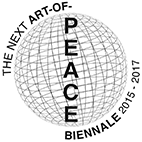Decentralised Networker Congress 2012
Mail artist H.R. Fricker declared the Decentralised World-Wide Networker Congress would occur wherever and whenever ‘two or more artists/networkers meet in the course of 1992’. He elaborated ‘The Decentralized World-Wide Networker Congress will serve as a meeting point for all kinds of networkers. The meaning of the common role as networkers should be the focus of the discussion.’ (source – TBC) In the end, a reported 500 artists from 25 countries and over 250 events took part in the congress according to this model. To celebrate the 20th Anniversary of Fricker’s event five artists’ organisations in Cornwall (UK), Odzaci (Serbia), Ponte Nossa (Italy), La Plata (Argentina), and Roanoke (USA) organised exhibitions/events which were connected one to the other largely through social media.
The organisers of the 20th-anniversary event sought to ‘expand this concept’ in tune with what they described as the ‘expansion of network options and variety of [social] media’ available to us now.’ Naming Fricker as ‘the Congresses originator, and our Honorary organizer’ they looked ‘forward to a re-energizing of these concepts, and expanded interactions within the network.’
During 2-4 November 2012 each node of the network received and exhibited mail art, documentation and engaged in live performance and exchange across Skype, Secondlife, Bambuser, Livestream. Feeling a part of the network but remotely located in York I wanted to stream a video over the period of the Congress that would relate to both Filliou’s Le Filliou Idéal action poem (focusing on ‘SITTING QUIETLY, DOING NOTHING’) and his lo-fi videos Video Dinner and Video Breakfasting, 1979 in which his pre-recorded performance to camera simulated real-time exchange. I was also interested in undermining an idealist, positivist notion of cyberspace as borderless, frictionless, and deterritorialized and focus instead on waiting, glitches, distance and disconnectivity.
I made several versions of a video of ‘sitting quietly, doing nothing’ beginning in a white walled gallery/studio space thinking that the blank background would help if the online video was to be projected from in a different place and time. I faced difficulties completing the work to my satisfaction, primarily because of issues framing my seated body in a way that would create the poor illusion of a figure sitting against a wall in another space when projected. Common issues encountered in video installation when working with scale, representation and mock-trompe l’oeil emerged here.
Running out of time before the broadcast was due to begin, I decided to try another approach of shooting the video in my back garden near to a domestic ornamental Buddha which also humorously referred to Filliou’s Zen Buddhism influence. Working quickly, spontaneously and just before leaving home for work made a better piece more engaged with humour and the everyday. I uploaded and looped the video on youtube and built a very simple webpage on my site http://dnc2012.roddyhunter.info for anyone participating in The Decentralised World-Wide Networker Congress to view, project, etc. I shared the link through the social media channels being used (primarily Facebook) and documentation of the work being viewed was similarly provided and discussed via the same channels (see image below).
Evaluation:
Participation in this event was very useful in a range of ways, namely,
- becoming aware of Fricker’s 1992 model and its emphasis upon a ‘decentralised’ congress / exhibition of meetings is certainly a model of curatorial practice relevant to the study;
- being able to experiment on a small scale with compositional and technical aspects of online video performance;
- exploring opportunities of curating, re-enacting or disseminating Filliou’s early work through my own performance;
- maintaining and developing networked contact with like-minded practitioners.
- understanding longitudinal network genealogies involving correspondents over many years such as Artpool Art Research Center, whose activities are central to this research.
Issues/questions:
- Duration: Fricker’s 1992 event lasted a year whereas this event lasted a weekend. The reconstruction shared that default timed sense of a festival or exhibition. It is more likely that an extended duration would have a more interconnected relationship to everyday life and meeting. Networkers would be able to determine with much greater autonomy the scope and nature of their participation.
- Curatorial Policy: It is debatable that the shorter duration of the 2012 event would have involved as many as the 500 artists from 25 countries in one event than the 1992 congress managed across 250 events. However audited or evaluated, qualitatively or quantitatively, the event followed the usual mail art exhibition curatorial policy of ‘No Fees, No jury, No returns.’ The event was for self-identified artists to connect with each other without a broader sense of public. This is not problematic in terms of default discussion of audience engagement and development, rather though it does limit those who do not self-identify as artists who may be able to contribute.
- The nature of ‘meeting’: Further researcher would need top be conducted to understand what constituted ‘meeting’ in Fricker’s 1992 event. In 2012, ‘meeting’ was expanded to incorporate mailings as well as live and mediated co-presence. This may relate to the emphasis upon social media use in the project through which we have such a different understanding of meeting. Yet, as a remote network participant only able to interact through social media there remained a ‘wish you were here’ element, privileging ‘real-time, real-space’ co-presence.
- Social Media: the call for participation in 2012 event adopted a somewhat uncritical approach to social media, viewing it implicitly by default as useful in expanding ‘network options’. Yet, the problems of social media as reflected upon by Lovink (2012) are well known. There is an element of techno-positivism here critiqued more regularly within new media curating (net_condition, ZKM, 1999-2000; Being Social, Furtherfield, 2012) suggesting a gap in understanding tactility and criticality of media use between these communities.


